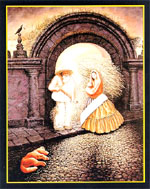
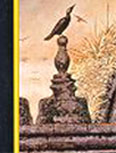
As a child, I loved to draw horses, but never got the opportunity to develop that interest. Not having that opportunity remains to this day, a great regret in my life. In 1996, I heard from a friend about an art drawing course she had attended in Tokyo, taught by a lady called Betty Edwards. The course was entitled, "Drawing on the Right Side of the Brain." That is also the title of a book authored by Betty Edwards. A few months later, in August of 1997, I attended a course taught by Betty Edwards in Seattle, Washington. Her course is intended to help people of modest or even nil artistic talent to bring out their ability to see and to draw realistic shapes and figures. Her methods and course content have their critics, but the number of students who have taken her course attest to the success of her methods.
My purpose in writing this article is not to describe her methods or her course, but to say that the main benefit I got out of attending that course was this: It taught me to see things in a new light. And this new found sense has served me well and given me a lot of pleasure. My friends remark how improved my photography has become, though photography has not been a hobby of mine. I'm able to put a new perspective on photographing a subject and its background in such a way that the photograph turns out better. Of course, any photographer will tell you this about his/her ability. It's when friends ask specifically that a certain setting be photographed by me that I realize Betty Edwards had taught me something which has turned out to be serendipitous. She taught me to see.
In the Logic section, the montage of the face was sent to me by a friend in Hong Kong. When I received the image, I looked at it, and I'm not exaggerating or boasting when I say that in about 10 seconds, I had uncovered the 8 or 9 human faces in that montage. This is not to degrade the artistic skill of my friend, but he had said that he couldn't see the more "hidden" faces until I had pointed them out to him. I repeat those images here below.


Seeing Negative Space
In the second photo (with the bird), the frontal face is easy to see, but the two profile faces just jumped out at me. Why, because the two profile faces formed the "negative space" of the column, whose structure itself is the "positive space". Here was an actual application of the concept of negative space, one of the concepts taught by Betty Edwards in her course. The two images below are from Betty Edwards' book.
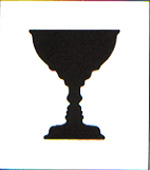
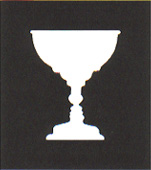
On the left is the vase with its "positive space" being the vase itself. The image of the right shows the concept of "negative space", being the black area around the vase. This concept is useful because if you were to draw the vase, you could draw the positive space itself, or if you encounter some difficulty in visualizing the positive space, by drawing the negative space, you would end up with the a drawing of the vase also. Negative becomes positive, and positive becomes negative. It was viewing the negative space of the column in the montage above, that enabled me to see the two profiles of the faces on the side of the column. (I never got a good answer to my question why the space was called positive/negative. A more descriptive term would be object/complementary space.)
Seeing Beauty
The Japanese once did a study on what are the attributes of a beautiful face of a woman, and they concluded one of the most important attributes is a relationship between the outer tips of the eyes and the center point of the lower lip. Those three points should form the ends of an equilateral triangle. What did this mean?
In Betty Edwards' class, we drew figures of a human head, and we were provided a schematic diagram of a human head, and shown some of the spatial relationships of the parts of the head and face. That diagram is shown below on the left. The 3 points are A, B, and C, and for an equilateral triangle, the lines AC = CB = AB should all be the same length. Some other facial relationships for a face that most people may find pleasing to look at: the distance between the eyes should be one eye width, that is GH = AG = HB, and the eyeline should be halfway between the tip of the skull and the point of the chin, FE = ED. There are some other relationships, but the first two, the equilateral triangle and the eye width, are the two more important relationships for what might be considered a pleasing face to look at by most people. In the rightmost two photos, let's see how these relationships hold for two women considered beautiful by many.

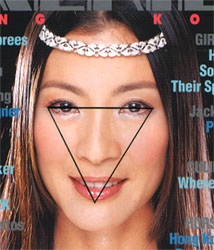
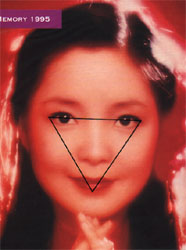
I believe everyone recognizes these two beautiful ladies - the center one being Michelle Yeoh, Bond girl and star of "Crouching Tiger, Hidden Dragon", and on the right, Teresa Teng, the singer from Taiwan.
I've superimposed a triangle on their faces at the relevant points. I measured the distances of the triangles on both faces and if one took the line AC as being the standard, then for:
Michelle Yeoh: AC = 1.0 CB = 1.03 AB = 1.0 an almost perfect equilateral triangle
Teresa Teng : AC = 1.0 CB = 1.0 AB = 1.11 the top of the triangle is quite a bit longer than the two sides
Now when we look at the eye width relationships:
Michelle Yeoh: AG = 1.0 GH = 1.11 HB = 1.0 eyes same width, and distance in between just slightly wider
Teresa Teng : AG = 1.06 GH = 1.25 HB = 1.0 eyes not same width, and spread quite far apart
So, even though many people consider Teresa Teng to have a "sweet" look, I have not heard many say she is beautiful, and the reason is in the separation of her eyes; they are just a bit too far apart. And the more you look at her image, the more you will realize that indeed, her eyes are spaced very far apart.
So now, for the guys who are looking for a real looker to be their wives or girl friends, these are two statistical measurements that you can employ to apply a scientific tool to your quest. And for the girls whose measurements on the face might be just a bit off the ideal, you might consider consulting your make-up artist, or hair stylist, who may be able to help you use styling or make-up to create a visual illusion towards a more perfect measurement.
The Most Famous Beauty of All
In the year 1506, the great inventor, engineer, and artist Leonardo da Vinci painted on a piece of pine wood, a young Florentine woman, Monna (or Mona) Lisa. Mona Lisa had married in 1495 a well known figure, Francesco del Giocondo, and thus she became known as La Gioconda. Leonardo himself loved the portrait so much that he always carried it with him, until it was sold in France to Francois I, by Leonardo himself. Today, the Mona Lisa hangs in the Louvre Museum in Paris, and is without doubt the most famous painting in the world.
When people describe the portrait, the two words most often used are "enigmatic", meaning perplexing or baffling, and "alluring", meaning tempting, desiring, and attracting. The eyes seem to look directly at you no matter where you stand relative to her. And the smile, there is something about that smile, but what is it? No one seems to come up with a good explanation of the smile. While the smile has often been copied, no artist can quite recreate or duplicate the smile. See the images below:
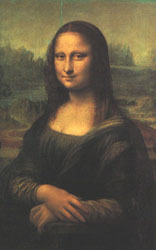
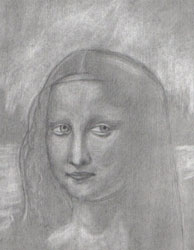
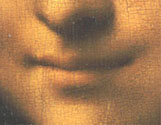
By no means do I consider myself an artist, but shortly after taking Betty Edwards' course, I wanted to continued drawing, and what better way than to try to draw the most famous painting of all. On the left above, is the image of the Mona Lisa itself, in the center is my attempt using graphite sticks on regular drawing paper. Try as I could, I could not recreate the smile, and it's my belief that the secret to that smile was due to Leonardo's ability to draw, firstly, beautiful outer corners of the mouth, and secondly, the center point of the lower lip where the lip fuses into the skin of the chin. If you look at the right most image, or can see a real photograph of the painting, or the painting itself, look closely at the petal shaped corners of Mona Lisa's mouth, and it is there that I hope you will appreciate real beauty. The smile, the dimples, the line between the upper and lower lips, and the center point of the lower lip holds the secret to the beauty that is the Mona Lisa.
Finally, there is still some speculation about who was actually the model for this painting. Leonardo recorded in his notebooks the records of model sittings, but nowhere can be found any record of the Mona Lisa model sitting. Why was that, and who actually posed for this painting?
A Dr. Lillian Schwartz of Bell Laboratories in the United States suggested that perhaps Leonardo really painted himself. She came to this conclusion by analyzing the features of Leonardo's face against that of the painting. She digitized the images of Leonardo and the Mona Lisa, and superimposed one onto the other. This technique was made possible with our more readily available computer power of today. You may draw your own conclusion from the image shown below.
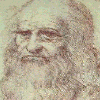
I hope that you have enjoyed this discussion of seeing,
art, and beauty - things that give me great pleasure in living life.
Return to [ Main Page ] [ Top of This Page ]
Copyright 2001